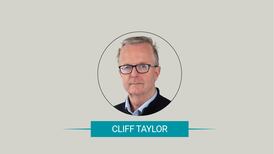Economics: Today marks the end of the current series of Business 2000, and somewhat unfortunately, the start of summer exams for many of you, writes Dan McLaughlin
For some analysts the boom years of the 1990s was an aberration for the Irish economy, a one-off spurt of exceptional growth which would inevitably give way to a time when the economy would expand at a much more sedate pace.
To them, and many others, the Celtic Tiger is dead, never to be seen again. Yet there are strong arguments in favour of the contention that the Irish economy can still generate growth rates of 6 per cent and above. Events over the past few months support the view that the pace of growth is indeed re-accelerating at a rapid clip - the Tiger is back, one might say.
The external environment is certainly very supportive, with the global recovery now turning to boom. China, the fifth-largest economy in the world, is growing at 10 per cent, pulling most of Asia in its wake.
Japan, too, long written off as a basket case, is flying, growing at an annual rate of 5.4 per cent in the first quarter.
In the US, still the most important economy on the planet, the annual growth rate is also around 5 per cent, which is well above potential, and Ireland's other main trading partner, the UK, is expanding by over 3 per cent per annum.
This picture of economic buoyancy does not extend to the euro area, it has to be said (growth there is 1.3 per cent against a potential of 2.25 per cent), but the trend is moving in the right direction, albeit at a less than frenetic pace.
The recent rise in oil prices, partly reflecting this very buoyancy in international demand, is also a potential negative for the global economy, although the price of crude oil would have to stay above $35 for some time to have a pronounced impact on growth.
This positive international backdrop is having a beneficial impact on Irish exports, countering the notion that the economy would not participate in any global upturn.
Indeed, the idea seems to have grown that Ireland is no longer attracting inflows of foreign direct investment, which is complete nonsense.
Inflows did drop in 2001 to 10.8 billion, reflecting recession in the US, but recovered strongly in 2002, reaching 25.9 billion, with 22.5 billion recorded last year.
The recent announcement by Intel, detailing further expansion plans in Ireland, should also reassure us that the tax regime in place is still attracting foreign capital in the face of stiff global competition.
Domestic spending in the economy also appears to have picked up momentum of late, judging by a raft of recent indicators. There were over 19,000 cars licensed in April, for example, a 3.1 per cent rise on the same period in 2003, and the total for the first five months of the year amounted to over 77,000, a 4 per cent annual gain, implying that 2004 is likely to see the first rise in sales since the millennium year.
Retail sales in total are also much stronger than 2003, rising by 5 per cent in volume terms in the 12 months to March, suggesting that consumer spending (which includes spending on services) in 2004 is likely to be much stronger than the sub-2 per cent recorded last year.
The upturn is also evident in the labour market.
The numbers on the Live Register actually peaked back in July 2003, at 177,800, and the trend is downward since, with April's total of 166,200 pushing the unemployment rate down to 4.4 per cent.
This implies that the pace of employment growth has accelerated in recent months, a view supported both by the Bank of Ireland's Job Index, which in April showed recruitment ads up 15 per cent year over year, and by income tax receipt trends - April's total was an extraordinary 19.4 per cent above the previous year, a figure never recorded even at the height of the Tiger period.
None of this is inconsistent with job losses, of course, which are still occurring, but this is an inevitable feature of any market economy, no matter how healthy, although some reports of redundancies or plant closures fail to put them in context. Net employment is probably growing at over 50,000 per annum, for example, and the 12,000 fall in the Live Register over the past nine months has not received the same coverage as the rise in the register did in the previous year.
Most Irish forecasters have taken account of some if not all of the positive signs, and the consensus for GDP growth this year has moved up to around 4 per cent.
This may still be too low, however, depending on export trends, and if the global economy keeps rolling we may see Irish growth rates of 6 per cent or more over the next 18 months, which is still the potential level open to the Irish economy, given productivity growth, the rise in the labour force and the scale of immigration.
True, this is below the pace recorded in the 1990s but is surely high enough to qualify for Tiger status.








